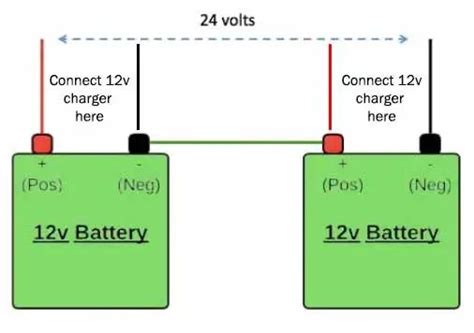The Secret to Long-Lasting 24V Batteries: Charging
Maintaining the lifespan of your 24V batteries hinges significantly on proper charging techniques. While the initial purchase is an investment, understanding and implementing optimal charging practices will yield substantial returns in extended battery life and consistent performance. This article delves into the intricacies of 24V battery charging, unraveling the secrets to maximizing their longevity.
What are the Different Types of 24V Batteries?
Before we dive into charging methods, it's crucial to understand the different types of 24V batteries, as their charging requirements can vary. Common types include:
- Lead-Acid (Flooded, Gel, AGM): These are prevalent in various applications, from golf carts to backup power systems. Each subtype (flooded, gel, AGM) has specific charging needs.
- Lithium-ion (LiFePO4, Li-ion): These are increasingly popular due to their higher energy density, longer lifespan, and faster charging capabilities compared to lead-acid batteries. However, they require more sophisticated charging techniques.
Choosing the right charger for your specific battery type is paramount. Using an incompatible charger can severely damage your battery, shortening its lifespan considerably.
How to Properly Charge a 24V Battery?
The "secret" to long-lasting 24V batteries lies in a multi-faceted approach to charging:
-
Understanding Charging Stages: Most batteries go through three main charging stages: bulk, absorption, and float.
- Bulk Charging: This rapid charging phase replenishes the majority of the battery's capacity.
- Absorption Charging: Once the bulk charge is complete, the absorption phase maintains a constant voltage, ensuring full charging without overcharging.
- Float Charging: This phase maintains the battery at a full charge without excessive current, preventing overcharging and extending its lifespan. This is crucial for maintaining a fully charged battery over an extended period.
-
Using the Right Charger: Investing in a high-quality charger designed specifically for your battery type (lead-acid or lithium-ion) is essential. Cheap chargers often lack the sophisticated control needed for optimal charging, leading to premature battery failure. Look for chargers that offer adjustable voltage and current settings for precise control.
-
Monitoring the Charging Process: Regularly check the battery's voltage and temperature during charging. Excessive heat generation indicates potential problems, such as overcharging or a faulty charger.
-
Avoiding Deep Discharges: Deep discharges significantly shorten the lifespan of any battery, regardless of its type. Aim to keep your battery's state of charge above 50% whenever possible.
-
Regular Maintenance: For lead-acid batteries, periodic checks for electrolyte levels (flooded batteries only) and terminal corrosion are crucial. Clean the terminals regularly to maintain good electrical contact.
What are the Signs of a Bad 24V Battery?
Recognizing the signs of a failing battery can help you address issues before they severely impact your system's performance. Common symptoms include:
- Reduced Runtime: The battery doesn't last as long as it used to on a single charge.
- Slow Charging: It takes significantly longer to charge the battery to full capacity.
- Swollen Battery Case: This often indicates internal damage and potential leakage.
- Low Voltage Readings: The battery consistently registers a lower voltage than its rated value.
How Often Should I Charge My 24V Battery?
The frequency of charging depends on your battery's usage and discharge rate. For infrequent use, a monthly top-up charge might suffice. However, for regular use, charging after each use is recommended to prevent deep discharges and maintain optimal battery health.
What is the Best Charger for a 24V Battery?
There isn't one "best" charger, as the optimal choice depends entirely on the specific battery type and application. Research chargers specifically designed for your battery type and ensure they offer the appropriate charging stages (bulk, absorption, float) and safety features.
Can I Overcharge a 24V Battery?
Yes, overcharging can severely damage your 24V battery, potentially leading to reduced lifespan, heat damage, or even explosion (especially with lead-acid batteries). Always use a charger designed for your battery type and monitor the charging process.
How Do I Prolong the Life of My 24V Battery?
Prolonging your 24V battery's lifespan involves a combination of proper charging techniques, avoiding deep discharges, regular maintenance, and storing the battery correctly when not in use. Proper storage involves keeping the battery in a cool, dry environment, and possibly applying a trickle charge to prevent deep discharge.
By meticulously following these guidelines, you'll unlock the secret to maximizing the lifespan and performance of your 24V batteries, ensuring reliable power for years to come. Remember, investing time in proper charging translates directly into cost savings and operational efficiency in the long run.

